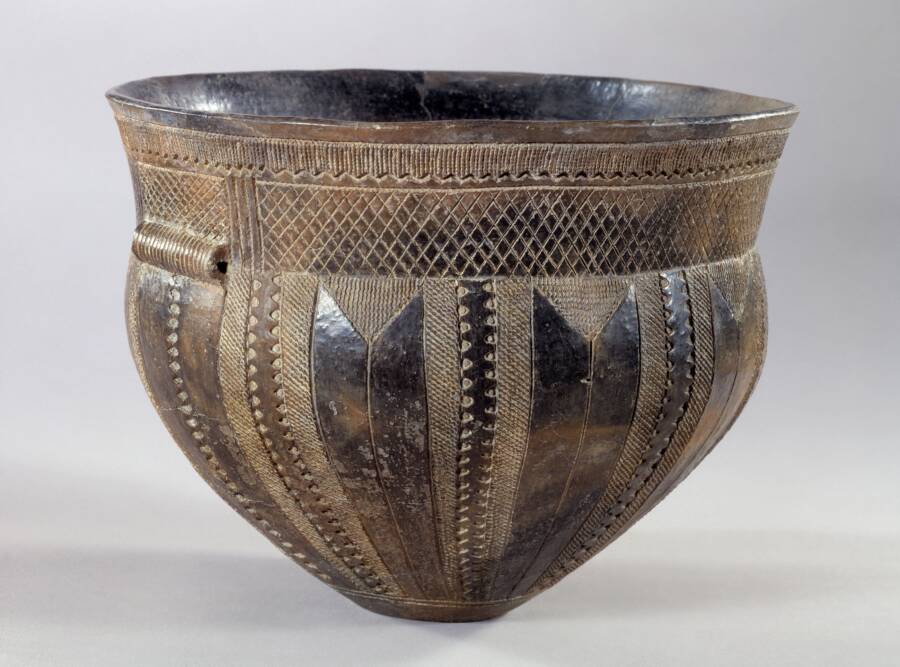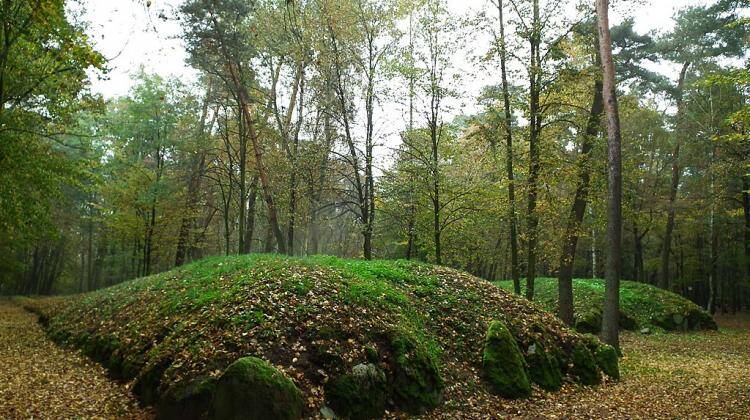The find could give archaeologists new insight into the customs of Europe’s first farmers, the Funnel Beaker people.
M. Przybyła / M. PodsiadłoKraków investigator Jan Bulas uncover the land site through orbiter images .
archeological treasures are usually discovered by digging deeply into the earth . One Polish archeologist , however , made an unbelievable discovery from the sky — and now he has unearth a 5,000 - year - one-time necropolis and a medieval fort .
Jan Bulas , an independent archeologist in Kraków , became scheme after acknowledge straight lines on satellite figure of speech of a farm near the town of Dębiany — lines only visible from above . He went to enquire with fellow archaeologist Marcin Przybyła .

M. Przybyła/M. PodsiadłoKraków researcher Jan Bulas uncovered the site through satellite images.
There , the pair made an astonishing breakthrough : the sprawling burial ground , lie in of 12 , roughly 150 - pes grave — and atop the cemetery , remains of a mediaeval fortress , complete with a moat .
Jan BulasThe site belike contains at least a 12 tombs .
“ The megalithic cemetery in Dębiany is one of the large and most interesting sites of this type in Central Europe,”said Bulas and Przybyła .

Jan BulasThe site likely contains at least a dozen tombs.
Using magnetic gradiometers — which can detect where ground has been disturbed in the past without digging up the earth — Bulas and Przybyła found the foundations of the mediaeval fortress . Beneath the fort lay even more treasure : the cemetery , which Bulas and Przybyła estimation to be around 5,500 years honest-to-god .
Since they come out digging two years ago , archeologist have receive seven Neolithic grave and two horses buried during the Bronze Age , some 3,500 years ago . But they think there ’s even more to uncover . Bulas and Przybyła mistrust that the site could control a dozen tombs .
Marcin PrzybyłaTwo Equus caballus were buried in the burying ground side by side .

Marcin PrzybyłaTwo horses were buried in the cemetery side by side.
The tombs they ’ve uncovered so far are between 130 and 165 feet long . Their longer paries were reward with wooden palisade , most of which have long since disintegrated — only the post holes rest . The short wallsseem to contain an entranceto a funerary chapel .
These tombs were once barrow mounds — that is , raise world over a grave . Bulas and Przybyła have called their discovery “ megaxylons ” , combining the Greek intelligence for braggart ( “ mega ” ) and Ellen Price Wood ( “ xylos ” ) . The burial mound they ’ve found near Dębiany were once much high . However , over meter , they ’ve gnaw into the earth .
“ Unfortunately , most of the remains of the deceased and equipment were hit from these burials while the cemetery was in operation,”Przybyła said . “ It was a ritual demeanor that we often play in cemeteries from that time period . ”

Wikimedia CommonsA piece of Funnel Beaker pottery, which dates back to 3200 B.C.
build above the cemetery — perhaps unknowingly — is a fort from the ninth and 10th century . In fact , the fortress is what first view Bulas ’ eye . The furrow he ascertain on the satellite image were the outline of the medieval construction and its moat .
Both finds reaching back late into former European history and could essay priceless when it add up to empathise ancient civilisation and their customs . The fortress even predates the establishment of the first kingdom of Poland , in 1025 . Bulas and Przybyła are especially bright that their breakthrough can shed luminousness on some of the realm ’s first Farmer .
“ [ The burial site ] provides us with extraordinary information on the funeral customs of the Funnel Beaker Culture , ” they enunciate .

Wikipedia/MOs810The so-called “Polish pyramids” found in Kujawy.
The Funnel Beaker people , named after the classifiable pottery they leave behind , are call up to be the first farmers in Europe . They come from the Middle East , passed through the Balkans , and began to spread across Europe in 4100 B.C.
Wikimedia CommonsA piece of Funnel Beaker pottery , which dates back to 3200 B.C.
The cemetery fall upon by Bulas and Przybyła carry the marks of the Funnel Beaker people . They routinely build barrow necropolis like this one . One cemetery found in the Polish area of Kujawy contained burying mounds so swelled that they ’re sometimes called “ the Polish pyramids . ”
Wikipedia / MOs810The so - call “ Polish pyramids ” found in Kujawy .
Alongside the cemetery , archeologist are eager to learn more about the fortress itself . It ’s not presently exculpated what purpose it served or how many people lived there .
“ [ The fort ] was not permanently dwell , ” explained Przybyła . “ Perhaps it serve as a military inner circle , or an object associated with religious or social rituals . ”
Beyond the history — and mystery — the fortress structure holds , it is likely one - of - a - kind . “ It is deserving noting that this is the only such structure known in Poland , ” Przybyła pronounce .
For now , Bulas and Przybyła plan to carry on their investigation of the internet site to see what other treasures from the past they can unearth .
They ’ll carry on to excavate the burying ground to teach more about the Neolithic grave mound and tombs . And they ’re odd to see what they can learn from the apparently more recent fortress — as well as what it can tell them about medieval life in Poland .
After reading about the cemetery blemish by artificial satellite , teach about thediscovery of the Gobekli Tepe , a temple even older than Stonehenge . Then , check outthis 1,400 - year - old Anglo - Saxon cemeteryand its ghostly “ sand silhouette .